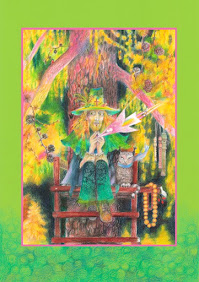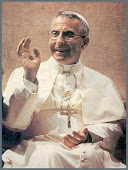Given the turmoil of the times and the harsh content of some of my recent posts, here are some comforting reflections taken from Peter Phan's book, Being Religious Interreligiously, which I thought were applicable to our present crisis within the Church. While these reflections focus principally on the inter-religious contemplative experience, I can think of many examples of irreconcilable tensions many of us are presently experiencing in the Church to which these wise words of wisdom apply. I was reminded of these reflections while reading Michael Bayly's Wild Reed blog posts on the Old Catholic Church and some spirited discussions among the commentators about the tensions between the need for prophetic witness communities and the dangers of schism and fragmentation. Caught between these two seemingly irreconcilable positions, what is one to do? It may seem like a wild stretch of the imagination to jump from such a discussion to these reflections on the great Christian/Hindu hermit Abhishitkananda, but I found the leap both insightful and relevant.
Phan is speaking of the French Benedictine monk, Henri le Saux, who lived in India for many years, immersing himself in the spirituality of Hinduism and taking on the name of Abhishitkananda:
This advaita experience, which implies the supreme renunciation of oneself and an even more radical renunciation of the divine "Thou" encountered in prayer seems to run counter to the Christian doctrines of the triune God, creation and prayer, and would make the double belonging to Christianity and Hinduism problematic, if not impossible. As he noted in his journal, Abhishiktananda himself experienced acutely the antimony between the Hindu and the Christian conceptions of reality and the painful push and pull of his double identity as a Hindu-Christian monk. He lived this anguish for nearly twenty-five years, never fully able to reconcile the two apparently opposing conceptions on the theoretical levels. ...He counseled acceptance of the unresolvable tension without attempting to harmonize them: "The best thing is, I think, to hold, even in extreme tension, these two forms of a unique 'faith,' till dawn may arise."
And yet this inability to reconcile theologically the advaita experience with various Christian doctrines did not diminish Abhishiktananda's certitude of the reality and validity of his experience. He noted, not without enthusiasm: "The experience of the Upanishads is true - I know!" Hence, multiple religious belonging or double religious identity is by no means a facile compromise or a painless feat of intellectual balancing between two opposing world views and ways of life. Rather, it is a lived drama of tension, never fully resolved on the theoretical level but affirmed at the existential plane, a continuing quest for harmony amid dissonance, ever elusive, provisional and unfinished, to be heard fully only on "the other shore."
(The contemplative must manifest) a commitment to the poor, a sensitivity to the Unspoken Speaker, that is, to the Spirit, who is not tied down to any dogma, rite, or law, and to the Word, which is uttered beyond the confines of any religious organization and hierarchy.
. . . . .
Multiple religious belonging is not for the fainthearted or the dilettante. As the life of Abhishiktananda has shown, it is a demanding vocation, a special call to holiness, which up till now God has granted to only a few. It is not unlike martyrdom. Ultimately it is not something one looks for or demands at will. It is a gift to be received in fear and trembling and in gratitude and joy.
Wikipedia
Abhishiktananda was the name taken by the French Benedictine monk Henri le Saux, whose religious experience in India led him to become a bridge between Hindu and Christian spirituality.
Born in Saint Briac, Brittany on August 30, 1910, he seemed destined for a religious life and entered 'minor seminary' at the age of 11, becoming a Benedictine novice in 1930.
He left France for India in the summer of 1948, never to return to France despite his affection for his homeland. He became immersed in the atmosphere of India, in particular the Hindu perspective of Advaita. He founded an ashram and religious community, Shantivanam, in 1950 and became Swami Abhishiktananda. In his latter years though, he found himself very drawn to religious experience within solitude, spending much time in the hermit caves at Arunachala. But at no point did he disavow his Christianity, and he celebrated Mass until virtually the end of his life.
He died on December 7, 1973 at Indore nursing home, weakened by a myocardial infarction that summer, after several years in which he had lived virtually as a hermit.






























































